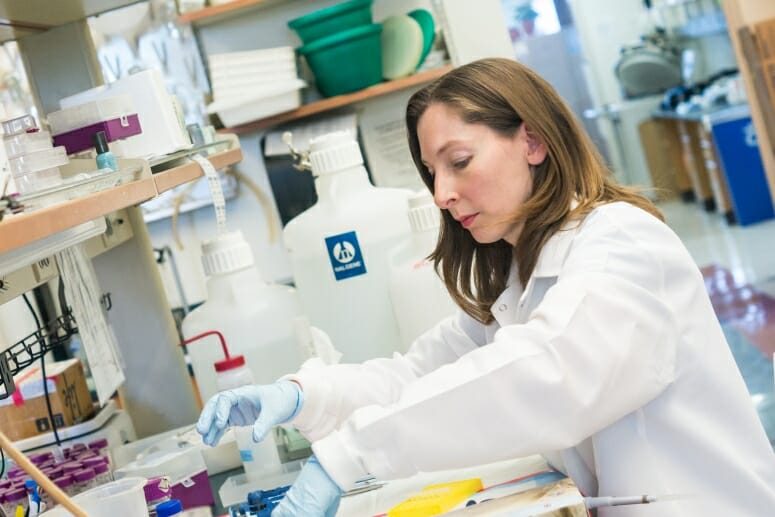23 Sep Breast cancer researchers learn how to teach an old drug new tricks to help patients

Beth Weaver wanted to know if there was a way to predict who would benefit from Taxol and who might not, to spare these patients the side effects of the potent chemotherapy drug. COURTESY OF UW CARBONE CANCER CENTER
Paclitaxel, or Taxol, is an old standby drug in the oncologist’s tool belt. Yet only about half of breast cancer patients treated with the drug see their tumors shrink or disappear, and doctors and researchers have no way of knowing which patients will benefit.
But that may soon change.
Published Sept. 8 in Science Translational Medicine, an analysis of patient samples by a team of researchers led by University of Wisconsin–Madison Professor of Cell and Regenerative Biology Beth Weaver has uncovered a key feature of breast cancers that renders them either vulnerable or resistant to paclitaxel treatment. And it could be used to help identify which patients are most likely to see success.
“It’s a huge problem,” says Weaver, a member of the UW Carbone Cancer Center. “Nearly half of patients who get this drug can be subjected to some pretty substantial side effects without any therapeutic benefit.”
Key to the finding is something called chromosomal instability, found in about half of breast cancers and caused by errors that take place when cells improperly divide.
“What we’re really trying to do is turn this conventional chemotherapy into personalized medicine,” Weaver said. “That would be the best of all worlds because paclitaxel is widely used, it’s inexpensive, and clinicians have a ton of experience with it. If we could just target it to the right patients, it would be a huge improvement in cancer care.”



